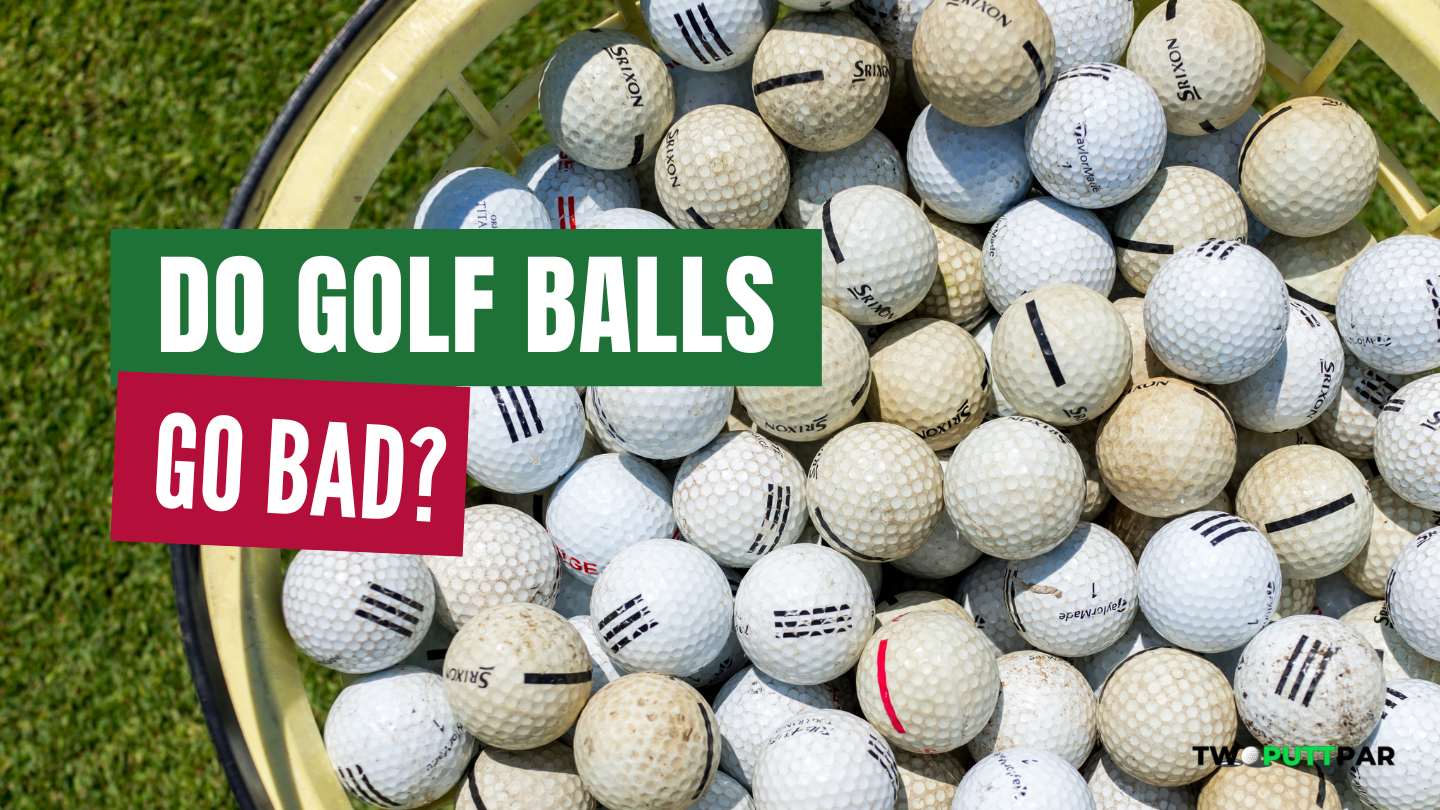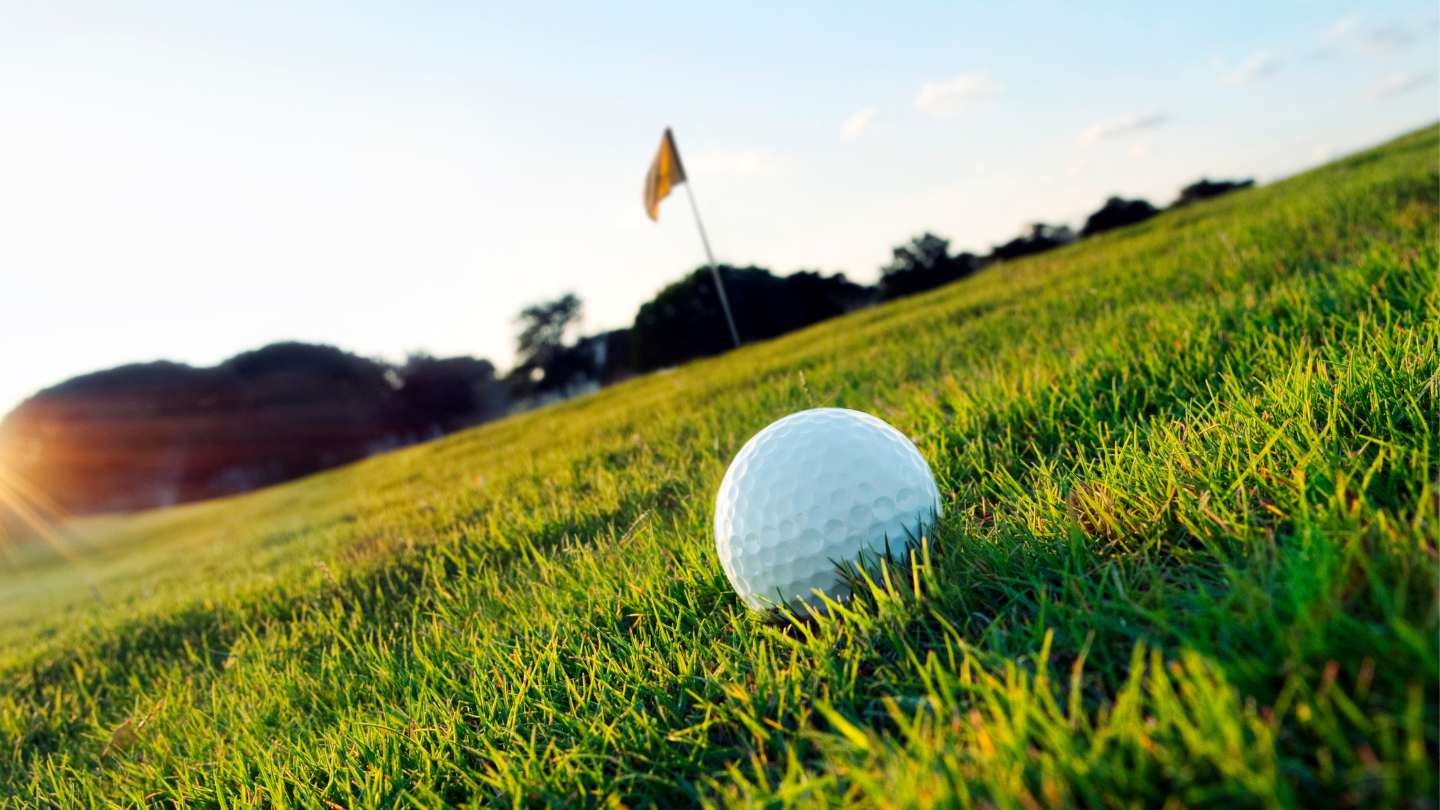
Mid-Handicap golfer who loves to share his rounds and experiences playing courses all around the UK in a hope that it will help others find those hidden gem golf courses.
I seek out golf courses that don’t get the credit they deserve and are often overlooked for the bigger more well known ones.
As avid golfers and lovers of the game, it’s important for us to understand every aspect of our equipment.
And with golf balls being a crucial component of our game, it’s natural to wonder if they have an expiration date or if they lose their effectiveness over time.
In this post, we will delve into the science behind golf balls and address the common misconceptions surrounding their longevity. So let’s get started and discover the truth about whether golf balls truly go bad.
Golf balls can go bad over time due to factors such as exposure to extreme temperatures, sunlight, humidity, physical damage, and natural aging processes, even when they are stored properly and used infrequently.
Do Golf Balls Go Bad?
Golf balls do degrade over time, even if stored properly and not used frequently, due to natural ageing processes.
When understanding the lifespan of golf balls, it’s important to consider factors like storage conditions and exposure to extreme temperatures.
Golf balls stored at room temperature can last around a decade or longer if they’re new.

However, their quality can be compromised if they’re kept in extreme cold or heat, as this can negatively impact their performance.
Sun exposure and humidity are also detrimental to golf balls’ longevity.
Despite these factors, the modern golf ball is incredibly durable. Its performance isn’t typically negatively affected, even when showing visible signs of wear and tear. That said, any external damage such as chips, scratches, cuts, or scuffs can make a golf ball ‘go bad’.
Even so, the impact of a golf ball’s ageing on your game might not be noticeable unless you’re a low or scratch handicap golfer playing at a competitive level.
It’s also worth noting that golf ball technology has advanced significantly over the past 20 years, so newer balls may offer improved performance over older ones.
How Long Do Golf Balls Last
| Type of Golf Ball | Average Lifespan |
|---|---|
| Tour/Professional | 7-10 years |
| Mid-range | 5-7 years |
| Budget/Value | 4-6 years |
| Used/Recycled | 2-3 years |
| X-Outs | 1-2 years |
| Practice/Range | 1 year |
Factors Affecting Golf Ball Lifespan
The lifespan of a golf ball is influenced by several factors including storage conditions, exposure to elements, usage frequency, and physical damage.
Storage Conditions
The quality and lifespan of a golf ball can be significantly impacted by how and where it is stored.
Ideal storage conditions for golf balls are in a cool, dry place out of direct sunlight.
Extreme temperatures, both hot and cold, can cause the ball’s materials to degrade, affecting its performance. Similarly, high levels of humidity can also have a detrimental effect.
Exposure to Elements
Exposure to elements such as sunlight, heat, cold, or water can also affect a golf ball’s lifespan.
Ultraviolet rays from the sun can break down the materials of the ball, leading to a loss in performance.
Prolonged immersion in water can also damage the ball’s core, reduce its bounce, and affect its overall flight distance and trajectory.
Find out – How Much Distance Do You Lose with Old Golf Balls?
Usage Frequency
The frequency with which a golf ball is used will also determine its lifespan. A golf ball that is frequently struck will wear out faster than one that is rarely used.
In addition, golf balls used on harder surfaces such as concrete or gravel will wear out more quickly than those used on softer surfaces like grass.
Physical Damage
Physical damage to the golf ball, such as cuts, scratches, or scuffs, can significantly reduce its lifespan.
These damages can affect the ball’s aerodynamics, compromising its performance and making it less effective during play.
Therefore, it’s advisable to replace any golf balls that show signs of significant physical damage.
How to Tell if a Golf Ball Has Gone Bad
Identifying a golf ball that has gone bad involves:
- checking the ball’s buoyancy
- monitoring its movement
- looking for physical damage
- and observing any discoloration or deformities
Buoyancy Test
A simple test to determine the condition of a golf ball involves assessing its buoyancy. This involves immersing the ball in water and observing whether it sinks or floats.
A golf ball that sinks suggests that there may be a leak in its surface, indicating that it has potentially gone bad.
Movement Monitoring
The way a golf ball moves can also provide insights into its condition. An unused golf ball that is stored properly can last about 10 years.
However, if you notice inconsistencies in its flight or rolling movement during play, this could suggest that the ball is no longer at its optimal performance level.
Physical Damage Inspection
Examining a golf ball for physical signs of wear and tear is another way to tell if it has gone bad.
Take a small coin, such as a dime or a 5p piece, and check the ball for any marks, paint loss, or scuffs that feel rough to the touch.
If the damage is smaller than the coin, it’s likely that the ball is still in good condition. However, larger areas of damage could affect the ball’s performance.
Discoloration and Deformities
Finally, look out for any significant discoloration, swelling, or deformities in the golf ball.
If a golf ball has been underwater for an extended period, it might show sharp discoloration. Swelling or deformities could suggest that the ball has gone bad.
Extending the Lifespan of Golf Balls
Extending the lifespan of golf balls involves proper storage, minimising exposure to elements, and handling them carefully during play.
Proper Storage
Proper storage of golf balls is critical in extending their lifespan. Ideally, golf balls should be stored at room temperature, away from extreme heat or cold.
This helps to maintain the integrity of their materials and performance over time.
Minimising Exposure to Elements
Golf balls should be protected from prolonged exposure to elements like sunlight, moisture, and extreme temperatures.
The UV rays from the sun can impact the outer layer of the ball and limit their long-term use.
Similarly, golf balls should not be left in water for extended periods as this can cause damage to the ball’s core.
Careful Handling During Play
During a game of golf, handling the balls with care can also help extend their life.
Avoid hitting golf balls on hard surfaces like concrete or gravel, which can cause physical damage.
Regularly inspect your golf balls for any signs of wear and tear such as cuts, scuffs, or discoloration, and replace any that show significant damage.
Rotating Your Golf Balls
Another technique to extend the life of your golf balls is to rotate them during play.
This means using different balls for different holes or rounds. By rotating your golf balls, you can ensure they wear out evenly and last longer.
FAQs
Q: How should I store my golf balls?
A: It is recommended to store your golf balls in a cool, dry place. Excessive heat or moisture can negatively affect their performance and lifespan.
Q: Can golf balls go bad in water?
A: Golf balls that are submerged in water for long periods of time may absorb water and become waterlogged, which can affect their performance.
Q: What is the shelf life of a golf ball?
A: The shelf life of a golf ball can vary, but generally, unused golf balls can last for several years if stored properly.
Q: Can used golf balls still be good?
A: Used golf balls can still be good if they are in good condition and have been properly cared for.
Q: How long can a golf ball last in the freezer?
A: Freezing golf balls can potentially extend their lifespan, but it is recommended to thaw them before use to avoid potential damage.
Q: Is there a difference in the lifespan of different types of golf balls?
A: Different types of golf balls, such as two-piece or multi-layer balls, may have varying durability and lifespan. It is best to consult the manufacturer’s guidelines for specific ball types.
Conclusion
It is clear that golf balls do indeed go bad. The factors that contribute to this include exposure to excessive heat or cold, age, and scuffing.
It is important for golfers to regularly check their golf balls and replace them when necessary in order to maintain optimal performance on the course.
Affiliate Disclaimer – As an affiliate, we may earn a commission from qualifying purchases. We get commissions for purchases made through links on this website from Amazon and other third parties.





Leave a Reply